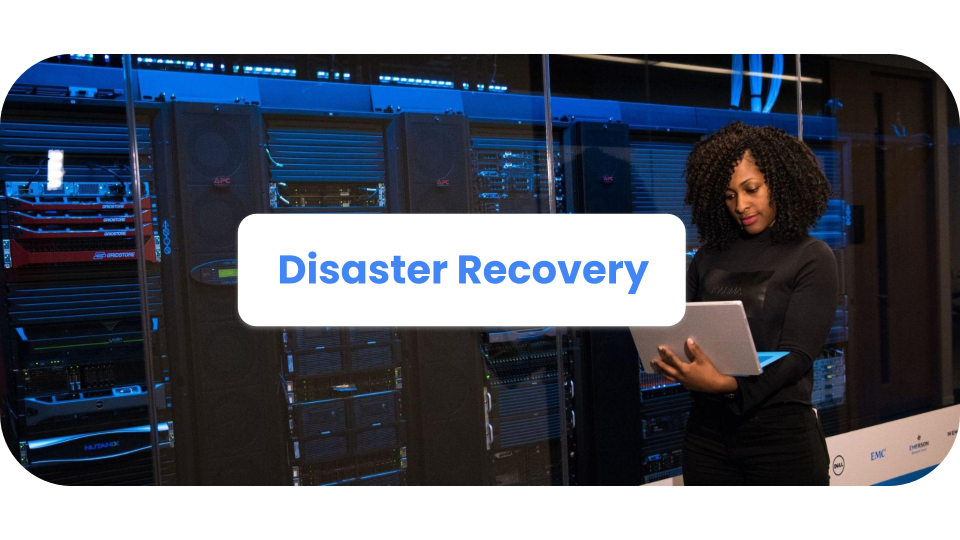The term Disaster Recovery, refers to the process of recovering defined data and functionality after a system failure caused by natural or man-made disasters. This Emergency plan includes the action protocol and methodology to be used when one, some or all of the company's computer systems are suspended.
The main objective of Disaster Recovery is restart critical corporate processes in the shortest time possible. In this way, the impact of the disaster is minimized, allowing the organization and its workers to continue operating relatively normally until the problem is resolved.
In their approach, two key metrics are often defined:
RTO (Recovery Time Objective) – The maximum period of time that a company's operations can be stopped.
RPO Recovery Point Goal: The point before which we are willing to return to restore data and business functionality.
The consequences of the interruption of a company's computer systems can vary depending on many factors, including the type of company and its activity. What can be stated is that the constant in these cases is the economic losses either due to the company's inactivity for a certain period of time or because commercially important data could not be recovered. And in some cases, Not having a disaster recovery plan can lead to business closure. Given this reality, it is imperative to have a Disaster Recovery solution for your company.
1. Is Disaster Recovery the same as a backup?
Having a plan to back up or archive your data is not enough. Make sure your disaster recovery plan addresses the complete recovery process, from creating backups to restoring and cleaning. This is discussed in related documents on data and disaster recovery.
That said, the purpose of backup processes is to protect company data. Generally, we talk about offline backup or online backup. That is, if you only have one copy system (Backup), in the event that your business suffers an incident that paralyzes or slows it down significantly (from a natural disaster, such as a storm with flooding, to an accidental fire, or a hack), you will only be guaranteed that your data has not been lost forever. On the other hand, if you have a Disaster Recovery plan, what you have is a ?Step by Step? to return to normal in the shortest time possible.
2. How does Disaster Recovery work?
The first step is to define and understand your business needs, define which data services are critical and which are his RPO and RTO expected. The plan includes strategies to minimize the consequences of the disaster so that the organization can continue operating or quickly resume its core activities.
Interruptions may result in lost revenue, brand damage and unhappy customers. The longer the recovery, the greater the negative impact on the business. Therefore, a good recovery plan should allow for quick recovery from outages, regardless of the source of the interruption.
Google offers several products and services that can be used as building blocks of creating a safe and reliable DR plan, including Cloud DNS, Cloud Storage and Compute Engine. Additionally, they have important partners, such as Veeam, Actifio and Zerto, who offer disaster recovery capabilities. No matter what your DR needs are, Google Cloud has a selection solid, flexible and profitable of products and features that you can use to create or improve the most suitable solution.
3. Advantages of having disaster recovery software
Google Cloud offers several features that are relevant to DR, including the following:
A global network. Google has one of the largest and most advanced computer networks in the world. Google's backbone uses advanced software-defined networking tools and edge caching services to deliver fast, consistent, and scalable performance.
Redundancy. Multiple points of presence (POPs) around the world allow for great redundancy. Your data is automatically replicated to storage devices in multiple locations.
Scalability. Google Cloud is designed to scale like other Google products (for example, search engine and Gmail), even when you experience a large increase in traffic. Managed services such as App Engine, Compute Engine autoscalers, and Datastore offer auto-scaling that allows your application to scale up or down as needed.
Security. Google's security model was built on more than 15 years of experience to keep customers protected when using Google apps like Gmail and Google Workspace. Additionally, Google Site Reliability Engineering teams help ensure high availability and prevent abuse of platform resources.
Compliance. Google undergoes regular independent third-party audits to verify that Google Cloud meets security, privacy, and compliance standards and best practices. Google Cloud complies with certifications such as ISO 27001, SOC 2/3 and PCI DSS 3.0.



